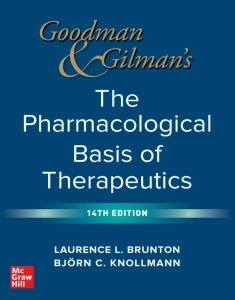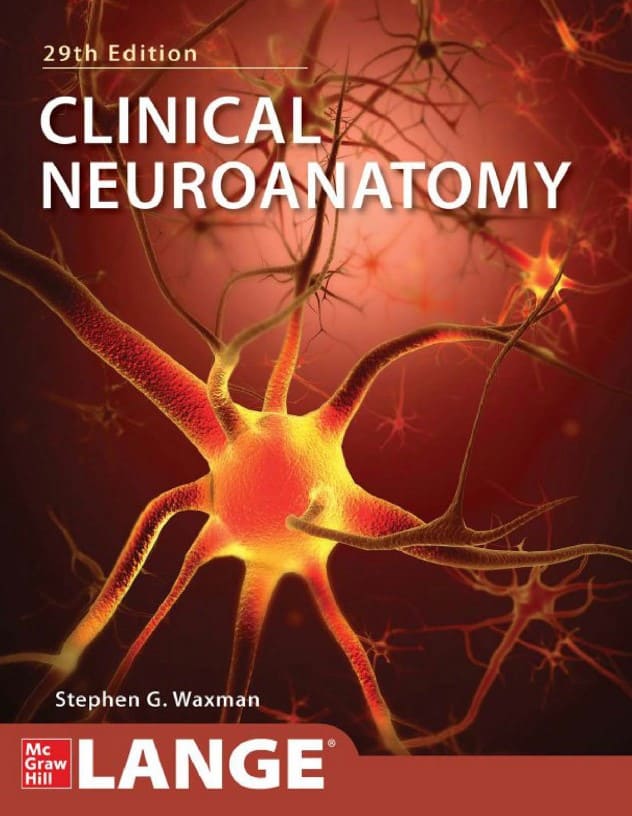 Download Goodman & Gilman’s The Pharmacological Basis of Therapeutics (14th edition) by Laurence Brunton & Bjorn Knollmann.
Download Goodman & Gilman’s The Pharmacological Basis of Therapeutics (14th edition) by Laurence Brunton & Bjorn Knollmann.
Goodman and Gilman’s The Pharmacological Basis of Therapeutics (14th Ed.), edited by Laurence Brunton and Bjorn Knollmann, stands as a monumental achievement in the world of pharmacology—a text that transcends its purpose as a mere reference book to become a veritable cornerstone of modern medical practice. This edition, as with its predecessors, maintains the legacy of blending rigorous science with clinical relevance, but it also boldly pushes forward, keeping pace with the rapid advancements in drug discovery, pharmacogenomics, and therapeutic innovation.
What makes this edition particularly remarkable is how it feels like a living document, constantly evolving with the times. The editors have achieved a delicate balance: the book remains true to its roots as the authoritative voice in pharmacology, yet it incorporates cutting-edge knowledge with effortless grace. As such, it’s a resource for both the seasoned physician looking to refresh their understanding of drug mechanisms and the eager student trying to grasp the fundamentals of pharmacodynamics and pharmacokinetics.
The sheer scope of the book is dizzying. It’s a deep dive into the molecular and physiological underpinnings of how drugs interact with the human body, from receptor theory to clinical pharmacokinetics. But the beauty of Goodman and Gilman’s is how it transforms this intricate science into a coherent narrative. There’s a rhythm to the writing, a cadence that pulls readers through even the most labyrinthine mechanisms of drug action.
One unique strength of the 14th edition is its emphasis on personalized medicine. Pharmacogenomics is no longer treated as an add-on but as a vital thread running through the text, reflecting its growing importance in clinical decision-making. The authors do an exceptional job of illustrating how genetic variability can influence drug response, side effects, and therapeutic outcomes, signaling the future of pharmacology as one that is increasingly tailored to the individual.
In terms of structure, the text is masterfully organized. Each chapter dives into specific therapeutic classes, meticulously detailing the molecular basis of drug actions, while also providing critical insights into the clinical applications, adverse effects, and drug interactions. The sections are rich with data, yet never feel like a deluge of information. Instead, they present a logical progression that allows readers to build a deep understanding from the ground up. This scaffolding of knowledge is one of the reasons Goodman and Gilman’s remains indispensable—no shortcuts are taken in the presentation of complex pharmacological principles.
That said, this is not a light read by any means. At over 1,600 pages, it’s a weighty tome, both physically and intellectually. It demands commitment, focus, and a willingness to wrestle with the intricacies of drug mechanisms and therapeutic strategies. Yet, for those who make the journey, the rewards are profound. The authors have managed to create a text that doesn’t just inform—it educates in the truest sense, prompting readers to think critically about pharmacology as both a science and an art.
Contents
- Section I: General Principles
- Section II: Neuropharmacology
- Section III: Modulation of Pulmonary, Renal, and Cardiovascular
- Section IV: Inflammation, Immunomodulation, and Hematopoiesis
- Section V: Endocrine Pharmacology
- Section VI: Gastrointestinal Pharmacology
- Section VII: Chemotherapy of Infectious Diseases
- Section VIII: Pharmacotherapy of Neoplastic Disease
- Section IX: Special Systems Pharmacology
Download Goodman & Gilman’s The Pharmacological Basis of Therapeutics (14th edition) by Laurence Brunton & Bjorn Knollmann in pdf from following download links.
Password for Download Links: biology.com.pk
File Size: 42.1 MB. Pages: 1664. Download Instructions. Kindly read the disclaimer.
You can also purchase Goodman & Gilman’s The Pharmacological Basis of Therapeutics (14th edition) by Laurence Brunton & Bjorn Knollmann from Amazon by clicking the image below.
You may also like to download the following books:
- BRS Pharmacology (7th Ed.) by Sarah Lerchenfeldt, Gary Rosenfeld and David Loose
- Pharmacology: An Introduction (8th Ed.) by Henry Hinter, Barbara Nagle, Michele Kaufman, Hannah Ariel and Yael Peimani-Lalehzarzadeh
- Rang and Dale’s Pharmacology (9th Ed.) by James M. Ritter, Rod Flower, Graeme Henderson, Yoon Kong Loke, David MacEwan, and Humphrey P. Rang
Download Hundreds of Best-Selling Biochemistry, Biology, Botany, Medical, Microbiology, Psychology and Sociology Books from Download Books.
Happy studying!





